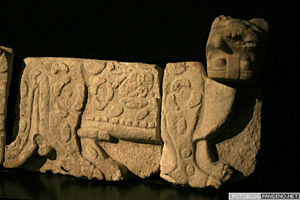 |
 |
 |
 Vallarta Living | Art Talk | August 2006 Vallarta Living | Art Talk | August 2006  
Officials Request Artifacts´ Return
 Wire services - El Universal Wire services - El Universal


| | The pre-Hispanic pieces arrived in the U.S. before a 1972 law passed to control their movement. |
The government will ask two U.S. museums to return hundreds of pre-Hispanic artifacts that were transported north prior to 1972, an official of the National Anthropology and History Institute (INAH) said this week.

Archaeologist Julia Bendímez Patterson, who heads INAH´s office in Baja California, said at a news conference that among the artifacts were stone tools, jars, ceramic pieces, baskets and leather and wood objects that have been kept at the Museum of Man in San Diego and at the Museum of the University of California, Los Angeles.

She explained that all the to-be-requested pieces were taken from Mexico before the entry into force of the 1972 law governing protection and conservation of archaeological and historical objects.

Bendímez said the request for the artifacts would be made in the course of binational meetings and she expressed confidence they would be returned quickly to Mexico.

She also offered a preview of this week´s event to present recent archaeological finds in the three Californias, the U.S. state and the states of Baja California and Baja California Sur.

The two-day presentation is set to begin Thursday at the National Anthropology Museum.

INAH director Felipe Solís said at the same news conference that some of the pieces date back about 3,000 years.

He added that in contrast to the archaeology of central Mexico, which includes huge ceremonial buildings, in the northern part of the country the archaeological finds usually have included objects from daily life, such as hunting and fishing equipment and other tools. | 
 | |
 |



